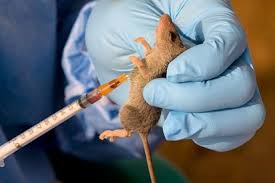Anambra has confirmed three deaths, but the number of cases suspected to be Lassa is uncertain. At least 28 people-18 in Anambra and 10 in Delta-are under quarantine or surveillance on account of connection with Lassa fever. The tracing and tracking down all who have been in contact with any of the dead confirmed for Lassa is ongoing and laborious.
The deaths in Anambra have prompted Enugu to intensify watch on its borders. It is sending surveillance officers to communities that border Anambra, afraid to leave anything to chance, said Enugu chief surveillance officer Okechukwu Ossai. “There is high daily mobility of residents of our state to Anambra and vice versa, and we share a near seamless border with Anambra,” he said. Lassa fever has broken into an epidemic in
Nigeria nearly every year since 1969 when it was first identified and named Lassa-after the town in Borno where researchers traced it. It is endemic in the country, has been for 47 years, killing dozens every year, and all states are at risk, the Nigerian Medical Association has warned in the past. It has a fatality rate lower than Ebola virus disease, but in one year killed more Nigerians than the Ebola outbreak ever did. Concern is about relationship with the land and animals. The Lassa virus is carried in multimammate rats (the common soft-furred African rat whose female has a double row of breasts), which normally live in bushes and visit nearby homes for food, which they contaminate.
Burning bush to create space for farming drives the rats from bushes into homes. “Local and cultural habits of drying foods on the roads, streets and even around houses, carelessly also provide avenues for the spread of the virus,” said Dr Kayode Obembe, former president of Nigerian Medical Association. Eighty percent of Lassa fever cases pass unnoticed with symptoms similar in many common diseases as mild fevers, body aches, tiredness and loss of appetite. But severe cases progress with sore throat, cough, vomiting, diarrhoea and unexplained bleeding from body openings. Deaths may eventually occur.
According to the World Health Organisation, “Some studies indicate that 300 000 to 500 000 cases of Lassa fever and 5000 deaths occur yearly across West Africa. In fatal cases, between one and 15 out of every hundred patients hospitalised for Lassa fever could die, usually within 14 days after the illness starts. The disease is especially severe late in pregnancy. In eight out of 10 pregnancies in third trimester, Lassa can kill a mother or cause an abortion. The first point of contact with Lassa fever is in consuming food contaminated by the multimammate rats. They harbour the virus, but don’t fall sick from it. Instead they excrete the virus in urine, faeces and other bodily secretions, which contaminates food.
Patients with Lassa also transmit the virus in body secretions-and healthworkers or family caregivers handling them are at risk. The Nigeria Centre for Disease Control (NCDC) has response teams rolling through affected states to beef up surveillance and actively search for cases of Lassa fever. The only fortunate thing about Lassa fever is that it has a definitive treatment, unlike Ebola, said NCDC director, Dr Chikwe Ihekweazu. Treatment takes care of the disease and prevents further transmission. Ihekweazu says beyond handling food to avoid contamination and contact with rats, handling patients is vital to preventing transmission. It requires healthworkers to have full complement of personnel protective equipment at best or simple things as gloves at worst.
Source:Swankpharm

 The respite is over. Lassa fever season is back, and it’s brought Anambra and Delta closer over the River Niger bridge. New cases popping up in Asaba have led to the death of a doctor and two others.
The respite is over. Lassa fever season is back, and it’s brought Anambra and Delta closer over the River Niger bridge. New cases popping up in Asaba have led to the death of a doctor and two others.







